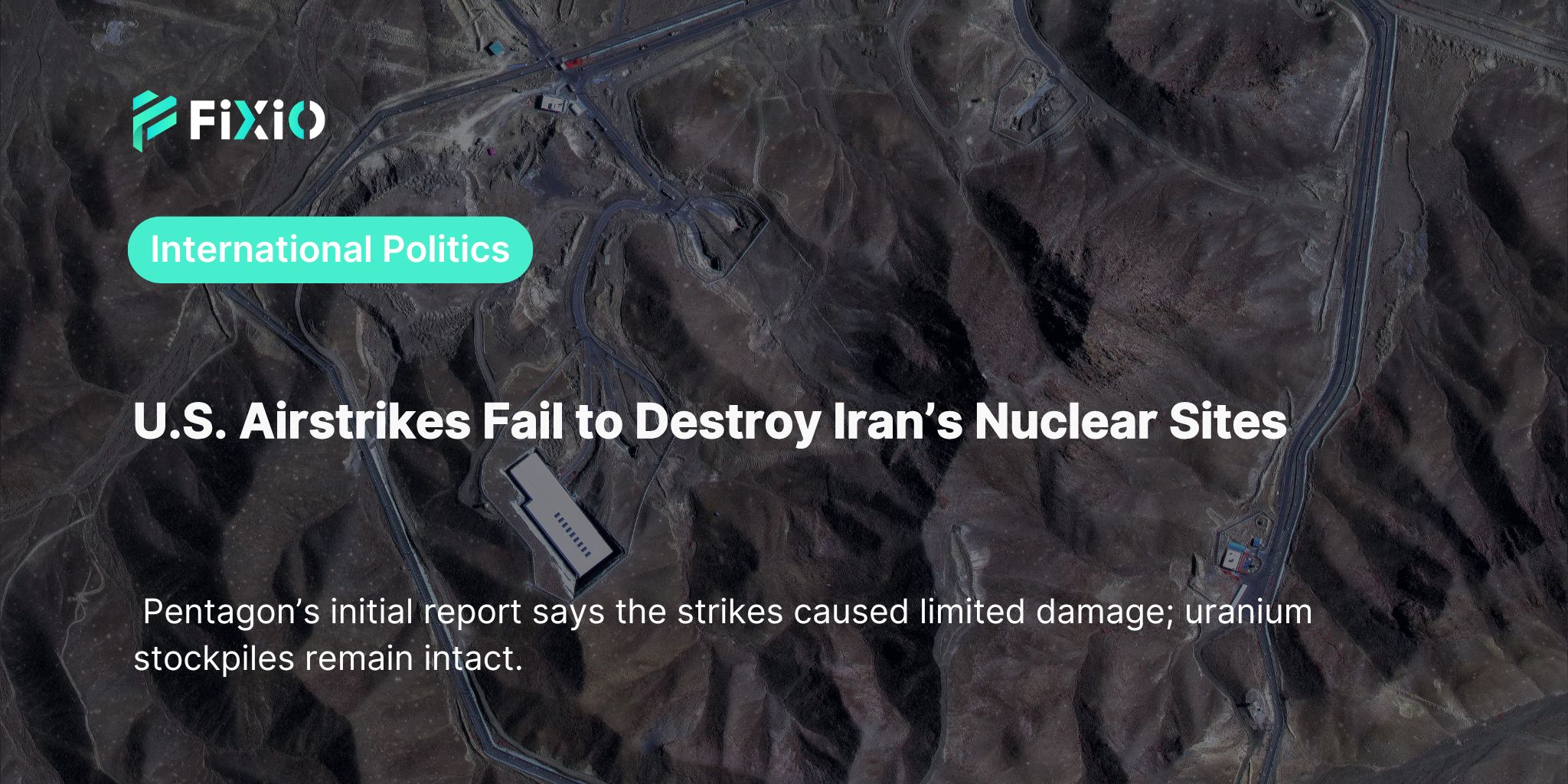
In June 2025, the United States launched large-scale airstrikes on Iranian nuclear facilities. According to the Department of Defense, these attacks did not destroy Iran’s nuclear program, and at best caused a delay of several months.
The airstrikes targeted three nuclear sites—Fordow, Natanz, and Isfahan—using bunker buster bombs capable of penetrating up to 18 meters of concrete and 61 meters underground.
However, according to Pentagon sources, most of the centrifuges and enriched uranium stockpiles remained untouched, with damage limited to surface structures. Satellite images showed craters and debris, but the extent of underground damage remains unclear.
The White House initially announced that the facilities were "completely destroyed," and Defense Secretary Pete Hegseth emphasized that the nuclear weapons production capacity had been eliminated. However, the Defense Intelligence Agency and independent military experts argue the effects were limited.
President Donald Trump countered criticism, stating it was an attempt to downplay the mission’s success.
Iran claimed that parts of its nuclear infrastructure had already been relocated, resulting in minimal damage. In retaliation, Iran launched a missile strike on a U.S. base in Qatar, specifically the Al Udeid Air Base, though most missiles were intercepted, with no casualties reported.
Israeli Prime Minister Benjamin Netanyahu welcomed the operation, stating that Iran's nuclear ambitions had been curbed.
The United States has 18 intelligence agencies, and differences in opinion often emerge even under the leadership of the Director of National Intelligence. As seen in the COVID-19 origin investigations, conflicting evaluations are also evident in the assessments of this military operation.
David Albright, director of the Institute for Science and International Security, noted that restarting Iran's nuclear program would require significant investment, time, and energy. He warned that any reconstruction efforts would likely invite further U.S. and Israeli strikes.
Meanwhile, Democratic Representative Brad Sherman expressed concern over the lack of clarity, questioning whether centrifuges or uranium stockpiles had actually been destroyed.
President Trump called for a ceasefire between Iran and Israel, which was achieved in mid-June. However, tensions persist, including concerns over Iran's reconstruction efforts, Israel’s security posture, and the political fallout in the U.S.
While the strikes damaged above-ground structures, core underground facilities and nuclear materials appear to have survived. In the long term, diplomatic pressure, sanctions, and enhanced surveillance will be essential to manage the situation.
👉 For the latest security and financial updates, visit the FIXIO Blog.
This article is based on the latest reports and publicly available information.
The content may be subject to change based on future assessments or findings.
Superior trade execution & trading conditions with the NDD method.

The online FX industry provides a platform for investors worldwide to engage in the buying and selling.

Subscribe to our daily newsletter and get the best forex trading information and markets status updates
Trade within minutes!
Comment (0)